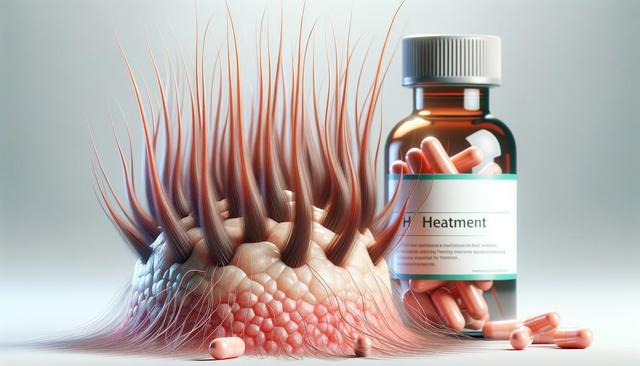Understanding Common Causes of Male Hair Loss
Hair loss in men is most frequently caused by androgenetic alopecia, commonly known as male pattern baldness. This condition is largely genetic and is influenced by hormonal factors, particularly the sensitivity of hair follicles to dihydrotestosterone (DHT). Other contributors include stress, poor diet, certain medical conditions, and use of specific medications. Understanding the root cause is essential before deciding on a treatment path, as this can influence which therapies are likely to be effective.
Before starting any hair loss treatment, men are encouraged to consult with a dermatologist or a hair restoration specialist. A proper diagnosis ensures that the treatment targets the specific type of hair loss, which may range from temporary shedding to more permanent baldness. Blood tests, scalp examinations, and medical history reviews are often part of the diagnostic process. This foundation allows for a more personalized and effective approach to managing hair loss.
Medical Treatments: Minoxidil and Finasteride
Two of the most widely used and FDA-approved medications for treating male hair loss are minoxidil and finasteride. These treatments are generally accessible, with minoxidil available over the counter and finasteride requiring a prescription. Their effectiveness has been validated through numerous studies and clinical trials.
Minoxidil is a topical solution that is applied directly to the scalp. It helps to stimulate hair growth and slow down hair thinning. Finasteride, on the other hand, is an oral medication that works by reducing the conversion of testosterone into DHT, which is known to shrink hair follicles. Men often see noticeable results with consistent use over several months.
Typical monthly costs include:
- Minoxidil: $10–$40 depending on brand and supply size
- Finasteride: $20–$70 depending on dosage and pharmacy
While both medications are generally well-tolerated, some users may experience side effects such as scalp irritation (minoxidil) or decreased libido (finasteride). It’s advisable to discuss these concerns with a healthcare provider before starting treatment.
Advanced Options: PRP Therapy and Laser Devices
Beyond traditional medications, more advanced treatments have become increasingly popular among men seeking alternatives. Platelet-rich plasma (PRP) therapy and low-level laser therapy (LLLT) are two such options that have shown promise in clinical settings.
PRP therapy involves drawing a small amount of the patient’s own blood, processing it to concentrate the platelets, and injecting it into areas of the scalp where hair thinning is evident. The platelets release growth factors that may encourage hair follicle regeneration. This procedure is typically performed in clinics and hospitals, with sessions spaced a month apart. Costs can range from $400 to $1,500 per session, depending on the clinic and location.
Low-level laser therapy uses laser-emitting devices like combs or helmets to stimulate hair growth. These devices can be used at home and are often recommended as a supplementary treatment. While results vary, some users report improvements in hair density and strength over a period of several months. Devices can cost between $200 and $1,000 depending on the brand and features.
Hair Restoration Clinics and Hospitals
For men considering professional treatments, selecting a reputable clinic or hospital is crucial. Many facilities specialize in hair restoration and offer a variety of services, from diagnostic assessments to surgical and non-surgical interventions. Clinics typically employ dermatologists or trichologists who are experienced in treating hair loss conditions.
Before choosing a clinic, it’s important to consider the following:
- Qualifications and experience of the medical team
- Range of treatment options offered
- Transparency in pricing and expected outcomes
- Patient reviews and success stories
Consultation fees range from $50 to $150, and some clinics offer free initial assessments. Treatment plans are usually customized and may combine several approaches for better results. Hospitals with dermatology departments also provide access to more advanced diagnostic tools and treatment options, often under the supervision of board-certified specialists.
Weighing the Costs and Long-Term Commitment
Treating male hair loss is often a long-term commitment, both financially and in terms of consistency. While some men may see early improvements within three to six months, ongoing use is typically required to maintain results. Discontinuing treatment can lead to the return of hair loss in many cases, particularly with minoxidil and finasteride.
When planning for treatment, it’s helpful to consider the cumulative costs:
- Minoxidil and finasteride: $300–$800 per year
- PRP therapy: $1,200–$4,500 annually depending on session frequency
- LLLT devices: One-time purchase, $200–$1,000
Insurance rarely covers cosmetic treatments like these, so men should evaluate their budget and set realistic expectations. Combining treatments under professional supervision often yields stronger outcomes but also increases overall expenses. Those who are unsure where to begin might start with a consultation at a specialized clinic to receive a tailored treatment plan that fits their goals and resources.
Conclusion: Finding the Right Approach for Your Hair Loss Journey
Male hair loss can be managed effectively with a thoughtful, informed approach. Whether considering over-the-counter solutions like minoxidil, prescription medications such as finasteride, or more advanced therapies like PRP or laser devices, there are several paths to explore. Clinics and hospitals specializing in hair restoration can provide valuable guidance and support throughout the process.
Ultimately, the best course of action depends on the individual’s hair loss pattern, medical history, lifestyle, and budget. By understanding the options and setting realistic expectations, men can take proactive steps toward improving hair density and maintaining confidence over time.


